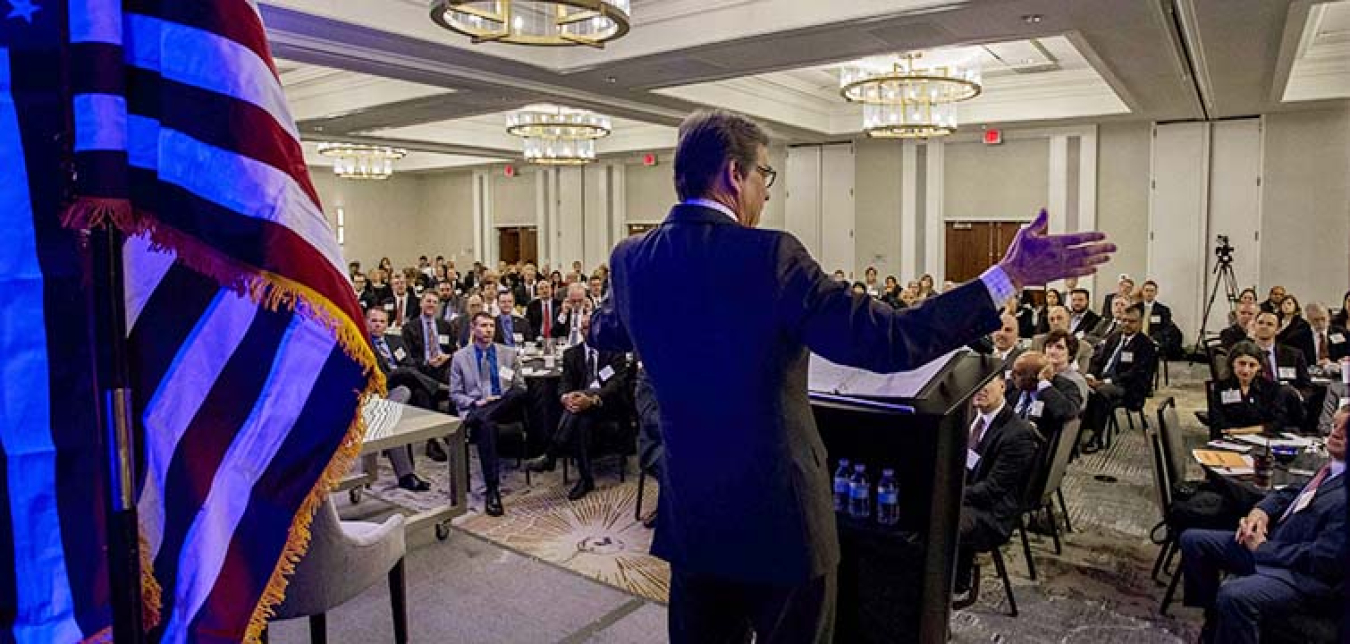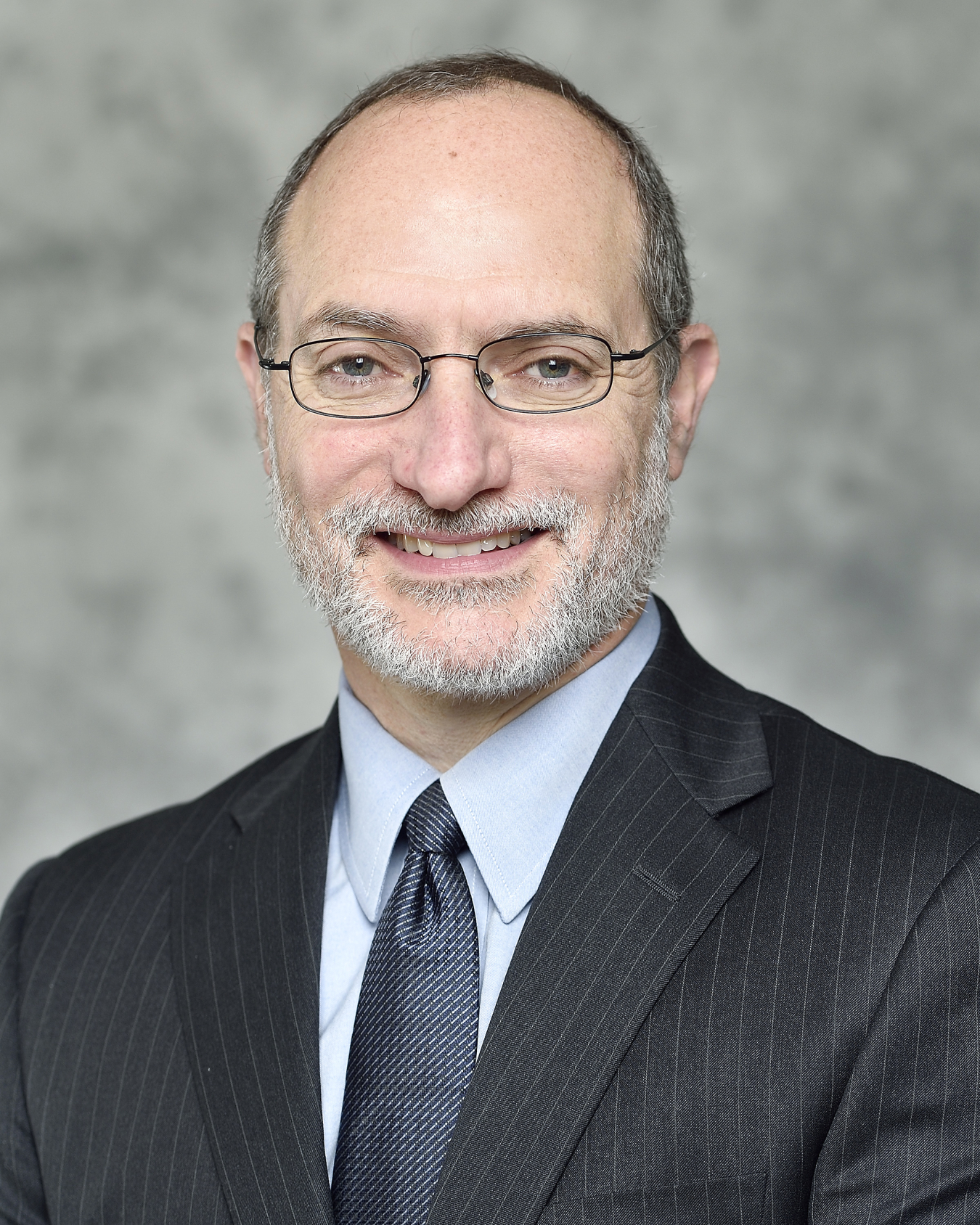The Big Ideas Summit brings together experts from our 17 National Laboratories and DOE programs to present and discuss the boldest, most innovative and transformative ideas for our energy future.
March 16, 2017
Secretary of Energy Rick Perry addresses the 2017 Big Ideas Summit in Washington, D.C.
The Big Ideas Summit brings together experts from our 17 National Laboratories and DOE programs to present and discuss the boldest, most innovative and transformative ideas for our energy future.
The 2017 Summit featured presentations and workshops devoted to six potentially ground-breaking ideas — three of these were new ideas, and three were ideas from previous summits.
Close to 300 people attended this year’s Summit, with attendees drawn from the DOE National Labs and Programs, other governmental agencies, and key partners.
Secretary Rick Perry opened the Summit with a clarion call to put our collective “shoulders to the task of thinking about how we can serve the American people through innovation in science and energy research.” Senator Lisa Murkowski of Alaska offered us a poignant reminder of the importance technological development can have for rural populations. And a panel private of investors gave us insights on the types of attributes they seek when deciding on investing in a big idea for the marketplace.
An idea is a “big idea” if the answers to the following questions are yes!
- Does the idea address important national needs?
- Is the idea complex and its solutions transformational?
- Would addressing the idea require integration across DOE program office?
- Would it require multi-disciplinary approaches?
- Would it benefit from capabilities of multiple national laboratories and their collaborators?
Proposed ideas must survive a rigorous down-selection process stewarded by the Laboratories’ 17 Chief Research Officers before being featured at the Summit. For the 2017 Summit, the three featured new ideas were down-selected from over 20 candidate ideas.
Since the Summit’s inception in 2014, the Labs have come together to explore 21 Big Ideas. The Big Ideas have impacted the way DOE does its business, serving as a coalescing and organizing force within the Department. The Grid Modernization ideas (2014) and Subsurface Science, Technology and Engineering idea (2014) catalyzed integration of multiple National Labs and DOE Energy Offices into coordinated science and technology activities. The Co-optimization of Engines and Fuels idea (2015) and Hydrogen at Scale idea (2016) facilitated partnerships between National Lab consortia and DOE program offices for enhanced program impact; and the Energy-Water Nexus Idea (2014) and the Microelectronics Beyond Moore’s Law idea (2016) strengthened key partnerships across the Office of Science and the Applied Energy Offices.
The 2017 Big Ideas Summit featured three new ideas and in particular explored the impact the ideas — if successfully developed — might have on the creation of jobs, the development of manufacturing capabilities, and the improvement of infrastructure:
- Highly Efficient Advanced Thermal Energy Research (HEATER): Transforming conversion, storage, transmission, and utilization of thermal energy
- Nuclear Energy Reimagined: Establishing hybrid nuclear energy as the cornerstone for energy security, reliability, and sustainability
- CARBON: Carbon Advanced Research for Building Our Nation — From carbon to infrastructure and fuels
The Summit also featured working sessions to strategize future developmental pathways for three previous ideas:
- Solving the Information Technology Energy Challenge Beyond Moore’s Law: A New Path to Scaling
- The Energy-Water Nexus
- Subsurface Science, Technology and Engineering Research, Development, and Demonstration (SubTER RD&D)
The ideas presented at this year’s Summit have the potential to transform America’s future for the better. And the Summit itself represents an important process that brings together the Nation’s 17 National Labs to think big, to challenge one another to develop extraordinary solutions to the singular challenges of today and tomorrow.
Adam Cohen

Dr. Adam Cohen, Former Deputy Under Secretary for Science and Energy at the U.S. Department of Energy
Dr. Adam Cohen served as the Deputy Under Secretary for Science and Energy at the U.S. Department of Energy (DOE) from October 2015 through May 2017. In the role, he oversaw the day-to-day operations of the Office of the Under Secretary for Science and Energy (US/S&E). The office was created by Secretary of Energy Ernest Moniz to closely integrate DOE’s basic science, applied research, technology development, and deployment efforts. As Deputy Under Secretary, he supports DOE’s offices of Electricity Delivery and Energy Reliability, Energy Efficiency and Renewable Energy, Fossil Energy, Indian Energy Policy and Programs, Nuclear Energy, Science, and Technology Transitions. In total, these programs steward the majority of DOE’s National Laboratories (13 of 17).
Dr. Cohen has more than 30 years of experience in management of research and development, strategic planning and operations at Princeton (PPPL), Argonne National Laboratory (ANL), and the Department of Energy. As Deputy Director for Operations at PPPL, he was responsible for both the engineering and operations function at PPPL, including design efforts, project management, human resources, financial activities, outreach, ES&H and applied research activities. He also served on the NJ DEP Oyster Creek Oversight Panel and on the Department of Energy’s Laboratory Operations Board. Previously, he served as senior advisor to the DOE Under Secretary for Science for nuclear energy programs, and at Argonne as Chief Operations Officer, as the head of environment, safety and health, as a nuclear facility manager, and as a researcher/principal investigator on nuclear fuels and materials. Earlier in his career, he spent four years in the U.S. Navy as a submarine officer, and he worked at Babcock & Wilcox manufacturing nuclear fuel for research reactors.
Dr. Cohen earned his Bachelor’s in Engineering from Columbia University, his M.B.A. from the University of Chicago, and his Ph. D. in Materials Science from Northwestern University.

